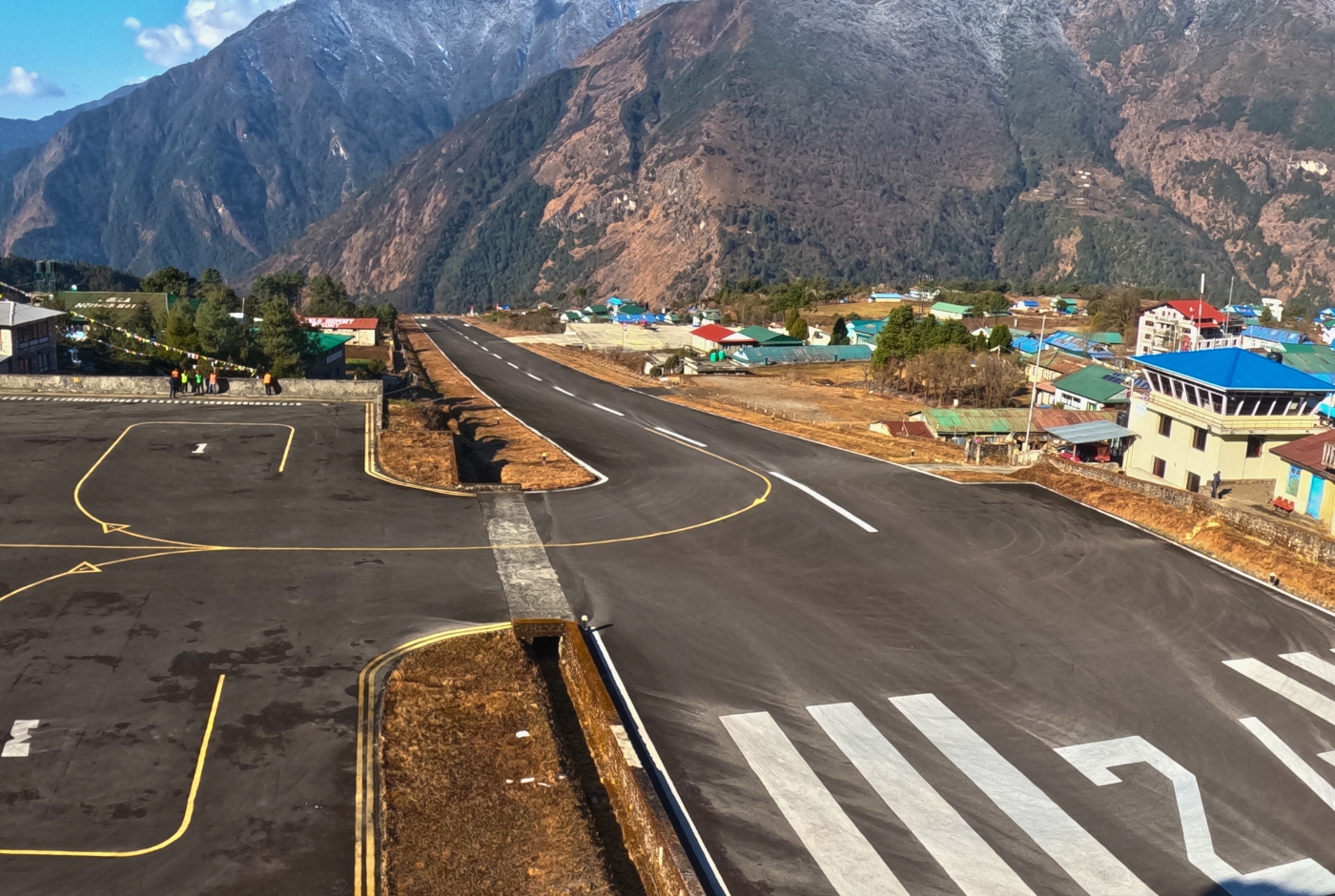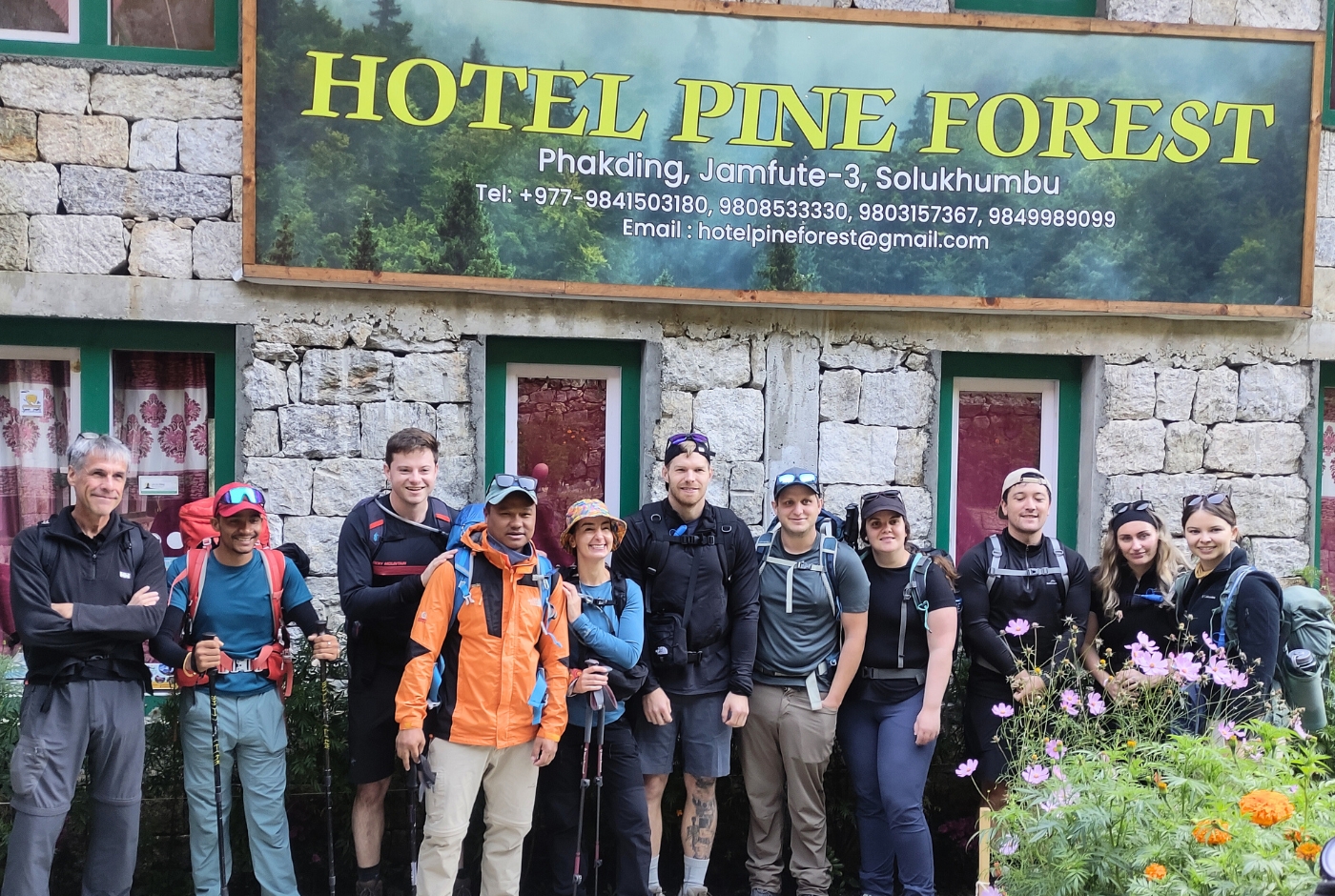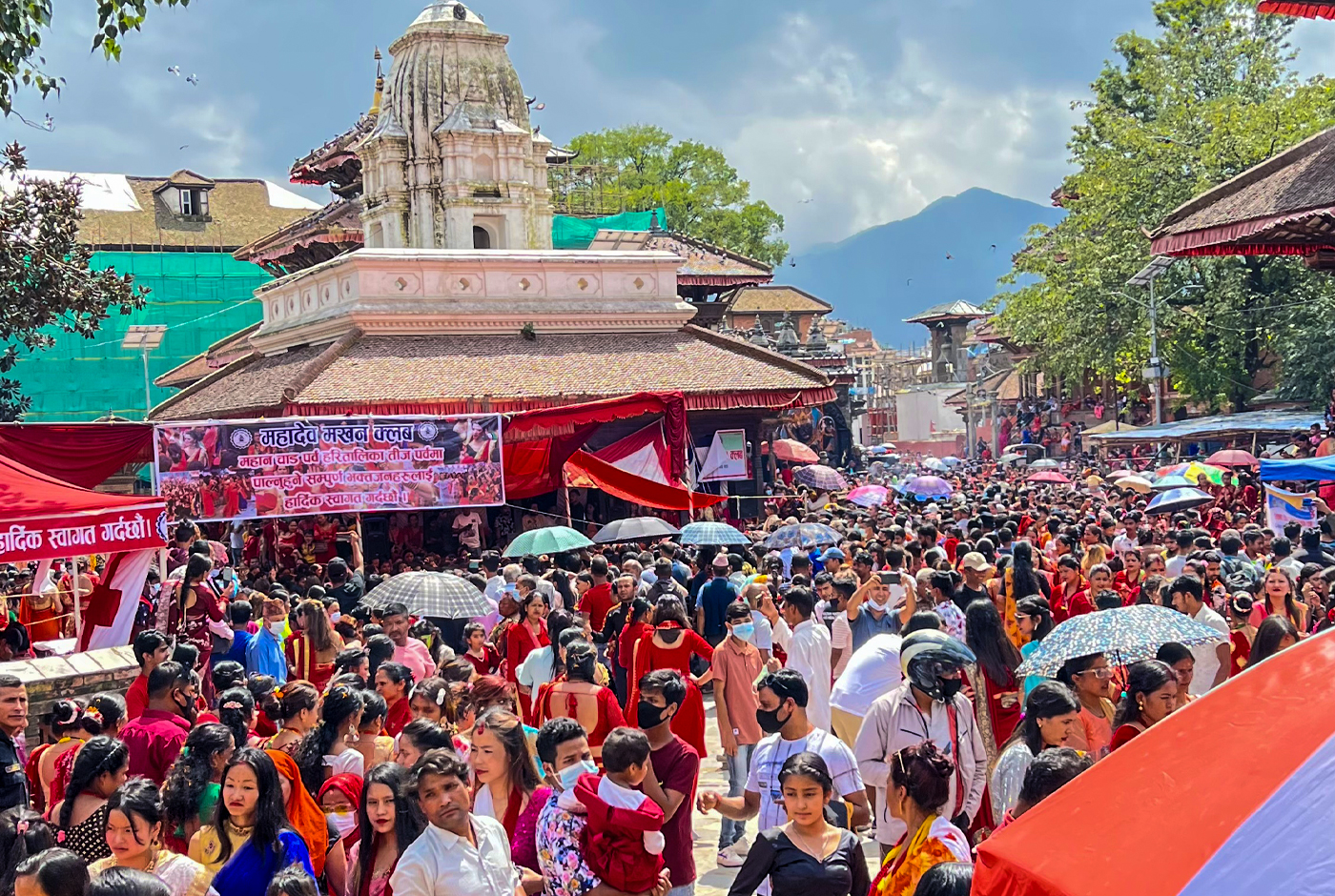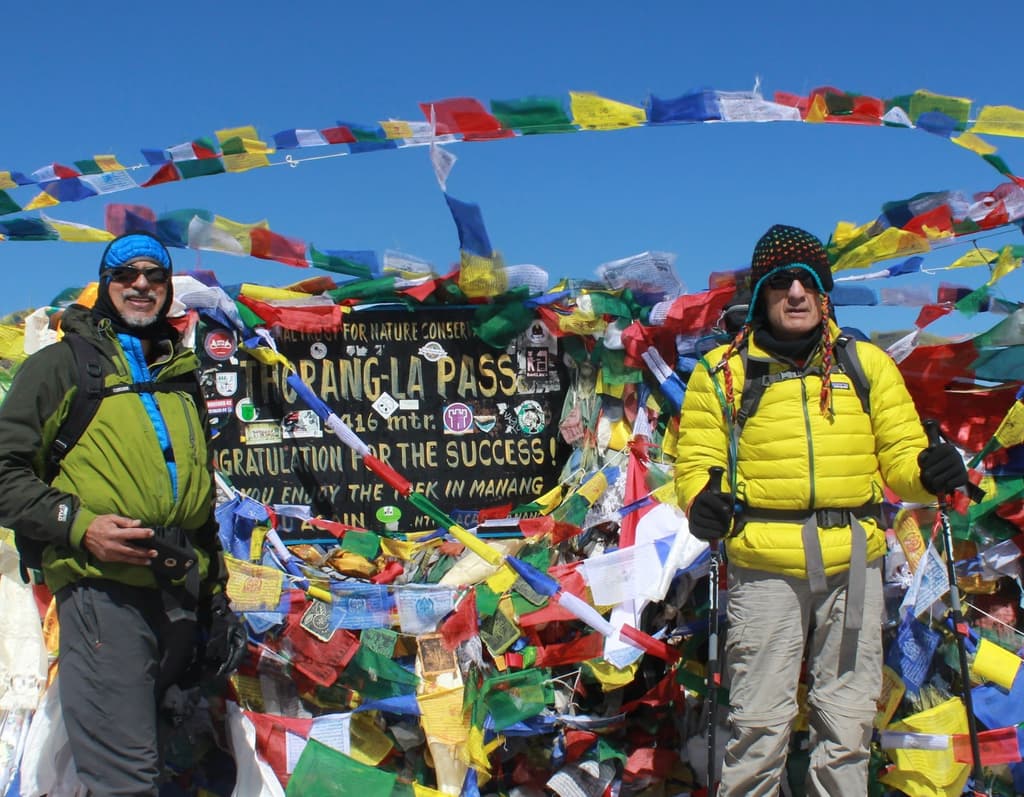The Everest Base Camp Trek in August is doable, but it comes with its own seasonal challenges. If you expect marvelous views of the mountains while trekking during August you can forget about it. There is heavy rainfall and overcast skies throughout the month. August is the month when the monsoon season is at its last phase. Before the advent of the autumn season, there is incessant rainfall and the trails are muddy and slippery. If you are planning a trek to Everest Base Camp in August, here are a few things that you should keep in mind.
Advantages of Trekking to EBC during August
- The trail is isolated and you can enjoy your trek in peace
- Teahouses remain generally empty and it gets easy to book rooms
- Lukla flights operate from Kathmandu airport instead of Manthali Airport as in the peak seasons
- Possibility of availing off-season discounts at shops and hotels in Kathmandu
- Amazing views of waterfalls cascading down the mountainsides. The monsoon rains recharge the waterfalls which dry up during the other seasons.
- The trail is filled with wildflowers and rare Himalayan vegetation
Disadvantages
- Heavy rainfall in the lower reaches
- Bad weather causes flight disruptions. You can expect your flight to get delayed or canceled.
- Leeches and bugs on the trail if you hike from below 2500m.
- The muddy and slippery trail makes trekking a challenge
- Risk of landslides, avalanches, and water-borne diseases
The weather of Everest Base Camp route during August
Nepal receives the highest amount of rainfall from mid-June to August. Everest Region is no exception, and one can expect heavy rainfall in the lower reaches. However the higher reaches or places above 4000 meters tend to remain dry as it falls in the Trans Himalayan rain shadow. But one can expect snow at high elevations.
Though it gets wet, the temperatures remain warm and comfortable. In Lukla, the maximum temperature shoots up to 22°C while in Namche it stays at a warm 18°C. In Gorak Shep, the average temperature remains at 4°C. The minimum temperature in Lukla doesn't get lower than 10°C. At Namche the average minimum temperature is 8°C and at Gorak Shep -0.1°C.
In August one can generally expect the sun to rise at around 5:30 AM and set at 6:30 PM. There’s rainfall or thundershowers at the later part of the day, post noon. Even though August is monsoon season, the rain doesn't fall continuously the whole day. There are bursts of rain with dry spells in between.
Lukla Flights

While the flights to Lukla resume operation from the domestic airport in Kathmandu, it gets frequently delayed or canceled due to bad weather conditions. Therefore it's advisable to keep some buffer days for Lukla flights. The price of air tickets may also be lower during August because of fewer tourists.
Accommodation

With less traffic in the mountains, most of the teahouses close down their business. But there will always be one or two teahouses open for business even during the off-season. With fewer trekkers on the trail sometimes you will find yourself as the only guest at the teahouse.
At Dingboche, all the teahouse owners close shop and migrate to the lower elevations in August. So you can strike off Dingboche from your itinerary if you are planning a stay there. Accommodations will be available at other stops located at similar elevations or above en route (Pheriche, Lobuche, and Gorak Shep).
What to pack for the EBC Trek during August?
As it rains cats and dogs during August, packing good-quality rain gear is a must. In addition, you must have sturdy and waterproof hiking shoes with a firm grip and good ankle support. A pair of trekking poles will go a long way in helping you tackle the slippery slopes.
As far as clothing is concerned, you can pack waterproof or quick-drying shorts, trekking pants, t-shirts, and undergarments. Remember that your clothes may take time to dry if they get wet. Therefore, carry enough clothes that will last through your trek. Hiking in wet clothes can be uncomfortable as well as bad for your health. Carry a warm base layer, down jacket, woolen cap, gloves, socks, buff, and a wind and waterproof parka for your trek above 4000 meters. In higher reaches, it may not rain but there will be snow and it may get pretty cold at night.
Although the teahouses provide mattresses and blankets, it's better to carry one's own sleeping bag as sometimes the sheets and quilts will not be in a sanitary condition. Most teahouses don't provide toilet paper. Therefore, you should carry a few rolls. Pack your own soap, shampoo, and towel. Carrying a good quality sunscreen lotion, moisturizer, and goggles with a UV shield is a must. In the high mountains, the UV rays are quite strong.
Your medicine kit should include Diamox, anti-diarrhea medicine, paracetamol, band-aid strips, pain relief spray or balm, bug spray or mosquito repellent, and other medicines that you take. Do not forget to carry a pouch of table salt to repel the pesky leeches.
A headtorch is a must if you are planning a sunrise hike to Kala Patthar. Last but not least, do not forget to carry enough local currency, important documents (passport, copy of your travel insurance), and permits.
Festivals in Nepal in August
During August Teej or the Women's Festival is celebrated throughout Nepal by Hindu women who pray for the long life and good health of their husbands. The festival lasts for three days. The womenfolk, dressed in colorful saris and ornaments, sing and dance outside temples and street corners. Huge gatherings of women are organized where they feast, sing and dance before taking a day-long fast and praying to Lord Shiva for the long life of their partners.

Krishna Janmashtami or the birth anniversary of Lord Krishna, also falls in the month of August. The shrines dedicated to Lord Krishna are decked up and devotees throng the temples. Cradles with the statues of Lord Krishna are decorated, and devotees sing ‘kirtans’ or devotional songs. In Kathmandu, the Krishna Temple at Patan Durbar Square is decorated with lights and flowers.
Gai Jatra, a street carnival dedicated to the souls of the dead, is celebrated either in August or September. The festival is only celebrated in Kathmandu Valley. Small children dressed in comical outfits parade the streets carrying pictures of their dead relatives. The LGBT community also holds a parade at the center of the city during this festival.
Gai Jatra is also the time when comedians and media outlets are given free rein to make fun of politicians and those in power.
Alternate Treks of EBC
You can explore some of the rarely visited Sherpa villages along the trail – Phortse, Thame, Kunde, and Khumjung. You can also visit the Gokyo Valley and enjoy the monsoon view of the Gokyo Lakes.
Conclusion
August presents a formidable challenge for trekking enthusiasts. Nevertheless, the Everest Base Camp Trek proves to be a venture worth undertaking. The rain-soaked mountains and trails possess an unparalleled allure. The lush greenery and captivating surroundings along the route beckon adventurers.
One cannot help but notice the abundance of cascading waterfalls adorning the mountainsides, while the previously barren hills are now adorned with a vibrant array of wildflowers. If one is willing to embrace the muddy and slushy conditions, embarking on the Everest Base Camp Trek in August can yield a truly delightful and gratifying experience.



Post a Comment